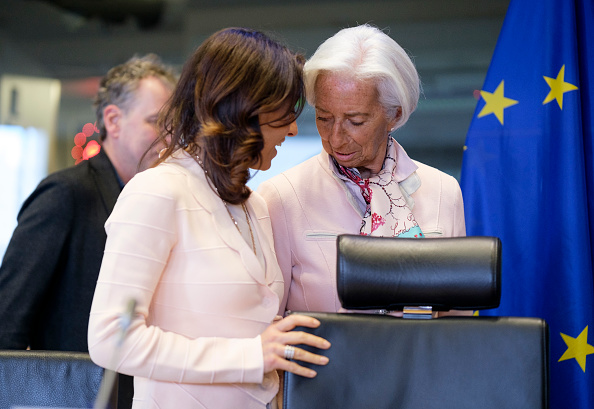It could be a sunnier summer for the Eurozone after the European Central Bank (ECB) hinted it might finally cut high interest rates that have enriched banks but left the broader economy stagnant – or worse.
Eastern European countries have got there first, though, with the Czech and Hungarian central banks already cutting rates.
The Frankfurt-based ECB has “just begun discussing the dialling back of our restrictive stance”, its President Christine Lagarde announced on March 7.
High interest rates may finally start to drop in June or July, suggested Lagarde, adding “we will know a little more in April” and “a lot more in June”.
Economist Felix Feather of Scottish multinational investment firm abrdn told Brussels Signal: “Cuts are not far away.”
“We expect the first rate cut to come in June, once the [ECB’s] Governing Council has had sight of [January-to-March 2024] wage data,” he added.
Daniele Antonucci, chief investment officer at Quintet Private Bank, added in an email: “Most interestingly, the ECB lowered its projections for this year’s inflation, from 2.7 per cent to 2.3 per cent.
This could “possibly open the door for rate cuts over the next few months” she said.
The ECB’s main refinancing rate, which was set at 0 per cent from March 2016 until September 2018, has been at 4.5 per cent since September 2023. The highest on record previously was 4.25 per cent in June 2000.
With its most recent 10 consecutive raises to interest rates, the ECB had been attempting to drive inflation down.
That also raised repayment costs for mortgage payers and those with credit card debt – during what already was a cost-of-living crisis.
Although a long stretch of elevated borrowing costs has brought pain for ordinary people, it provided cheery windfall for the European Union’s banks.
Ireland’s AIB on March 6 posted a record €2 billion profit for 2023, as interest income shot up by 83 per cent.
Outside the banking sector, it has been a less rosy picture for the Eurozone. Ireland saw a GDP drop of 3.4 per cent in 2023’s last quarter – the largest in the becalmed EU, Eurostat said March 8.
Several of Lagarde’s comments, though, left economists a little puzzled.
“One point I picked up on was how she characterised the economic situation,” Nick Chatters, who manages bond investments for Aegon Asset Management, told Brussels Signal.
On the one hand, Lagarde “pointed to good growth over the next few years, given their [ECB’s] expectation that real incomes should remain strong, as inflation falls and wages remain robust,” he noted.
Yet, he added: “To me, this seems at odds with the risks to growth being ‘tilted to the downside”, as she mentioned.”
Eastern Europe’s central banks have proven faster to take the knife to rates.
The Czech National Bank “has begun to ease policy more sharply than expected, owing to a dramatic fall in inflation and a sharper economic downturn,” Oxford Analytica said on March 8.
The Hungarian National Bank (MNB) “continues to cut rates aggressively” as well.
Both could be worth watching, say economists.
“The pace of easing will be sharpest in Hungary, due to high real rates [almost 5 per cent],” according to Oxford Analytica, while the “most dramatic policy shift will be in Czechia, the only EU economy yet to return to pre-pandemic levels of output”.
Meanwhile, coupled with a weak Eurozone economy, the expected rate cuts may have one other effect, currency analysts predicted.
“At some point this year, we’re going to get a parity in euro/dollar,” said Geoff Yu of New York-based global investment company BNY Mellon.





